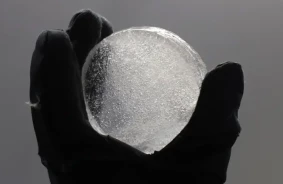Three individuals with severely impaired vision who underwent stem cell transplantation experienced significant improvements in their sight that lasted over a year. A fourth patient also saw improvements, but the results were inconsistent. These four patients became the first to receive stem cell transplants aimed at repairing damaged corneas, which are the transparent outer layer of the eye.
“The results justify expanding the treatment to a larger number of patients,” says stem cell researcher Jeanne Loring from the Scripps Research Institute in California.
The outer layer of the cornea is supported by a reservoir of stem cells located in the limbal ring around the iris. When these cells are depleted—a condition known as limbal stem cell deficiency (LSCD)—scarring can occur on the cornea, potentially leading to blindness. This can result from eye injuries or autoimmune and genetic disorders.
Current treatments for LSCD are limited, primarily relying on corneal cell transplants from the patient’s healthy eye, a complex procedure with uncertain outcomes. If both eyes are affected, corneal transplants from deceased donors may be used, but these can be rejected by the immune system.
Ophthalmologist Koji Nishida from Osaka University in Japan and his colleagues chose a different approach, utilizing induced pluripotent stem cells (iPS). They took blood cells from a healthy donor, reprogrammed them to an embryonic-like state, and transformed them into a thin transparent layer of corneal epithelial cells.
From June 2019 to November 2020, the team enrolled two women and two men aged 39 to 72 with LSCD in both eyes. During the operation, the team removed scar tissue from the affected cornea of one eye, applied the donor epithelial cells, and covered the site with a soft contact lens.
Two years post-transplant, none of the patients experienced severe side effects. The transplants did not form tumors—a known risk associated with iPS cells—and were not attacked by the patients’ immune systems, even in those who did not take immunosuppressive drugs. Importantly, the transplants were not rejected by the body; however, further procedures are necessary to confirm their safety.
After the transplants, all four participants saw improvements in vision and a reduction in corneal damage. Three maintained their improvement, while the fourth experienced some deterioration over the course of the year.
The reason for the improvement in vision remains unclear. It could result from the proliferation of the transplanted cells or the migration of the patient’s own cells assisting in corneal regeneration.
Clinical trials are set to begin in March to evaluate the effectiveness of the method.
Source: nature














Comments (0)
There are no comments for now